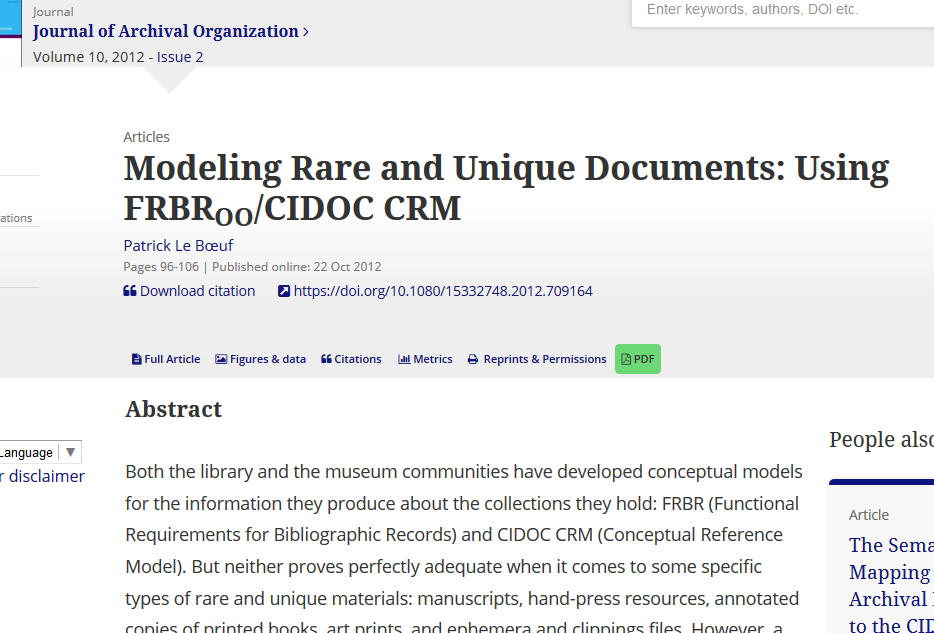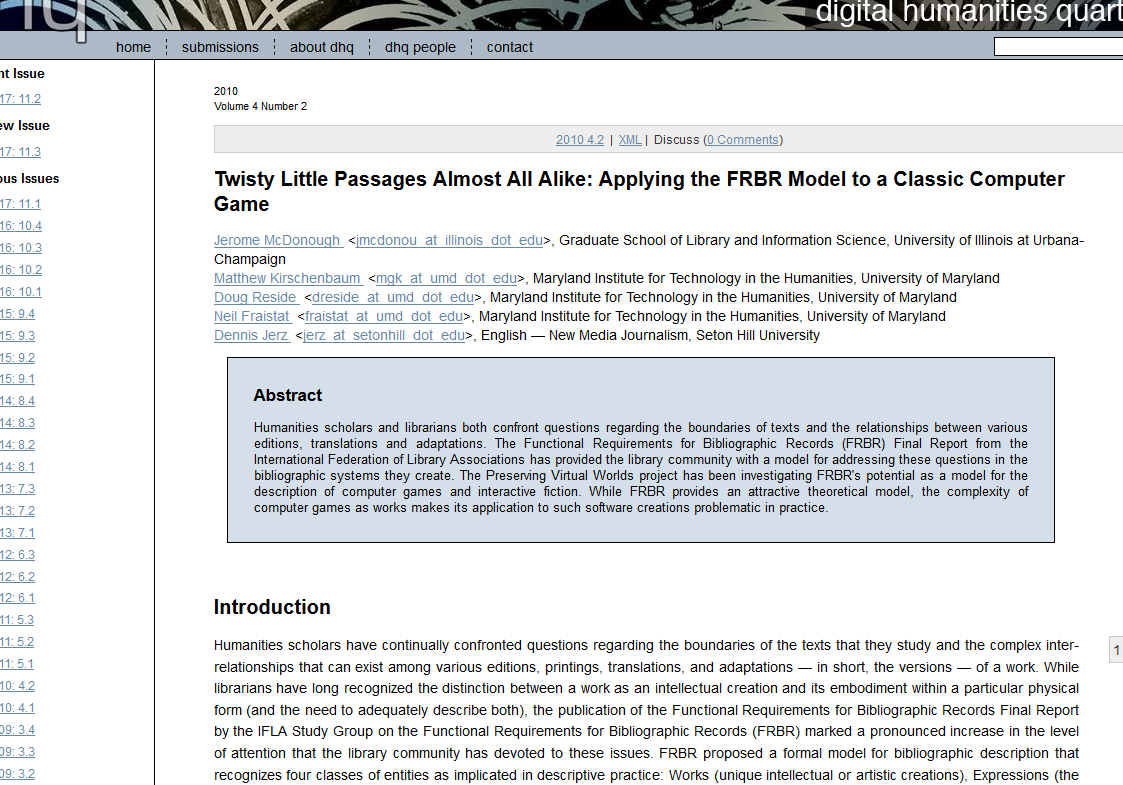Reference


(Images of articles by Le Bœuf and McDonough et al)
Here, we compare not artifacts, but works about artifacts. The Le Bœuf article introduces the FRBR (Functional Requirements for Bibliographic Records), CIDOC CRM (International Committee for Documentation Conceptual Reference Model), and FRBROO (FRBR-object oriented) models, and uses the FRBROO model to describe manuscripts, art, prints, and other materials. The McDonough et al. attempts to apply the FRBR model to the video game ADVENTURE.
Le Bœuf describes the three models in turn, going over the important components and differences. FRBR, which in its name states to be a tool for proper bibliographic reference, he notes "makes no attempt to account explicitly for the production processes or other events that those objects may have undergone since they were created"1, but distinguishes between 'works', 'expressions', 'manifestations' and 'items', which represent different levels of abstraction (Le Bœuf framed these distinctions in terms reminiscent to the print book: a 'work' is the highest level of abstraction, 'expressions' encapsulate things like translations or other more fundamental changes, a 'manifestation' would be comparable to a publication, and an 'item' is the physical artifact2). The CIDOC CRM is a model coming from the International Council of Museums, is a method of documenting museum artifacts, and as such has greater capacity to describe changes made to individual objects over the course of their lives. Finally, FRBROO is in some senses a combination of FRBR and CIDOC CRM, as it was formed in a collaborative effort and attempts to encapsulate the crucial features of both3. Le Bœuf then applies the FRBROO model to copying manuscripts (and other objects). He observes that the copying a manuscript can incidentally result in a new expression due to scribal errors or reinterpretations; where we might expect a copy, or a new manifestation, we get an entirely new expression of the copied work. Though Le Bœuf does illustrate some of the difficulties in modeling manuscripts, he ignores some crucial elements of manuscript cultures which effect their interpretations under these models. For one, manuscripts were not just necessarily unique due to the large amount of variables involved, but manuscripts were intentionally unique, they were products of their scribes and owners. The various creators of 'copies' of these works had great effect on their interpretations. Further, combining disparate works into unique collections adds new layers to these questions of categorisation.
In the digital world, similar problems arise when modeling and categorising artifacts. In the other article above, a team of scholars attempts to model the 1976 game ADVENTURE initially made by Will Crowther in the FRBR model. They found that for works such as this, "the complications proliferate almost exponentially"4. It is unclear how different (according to FRBR) two copies of the game written in completely different programming languages should be if someone playing the game cannot tell the difference between the two, even though the underlying infrastructurial works may be almost incomparable. Further difficulties arise when considering the infrastructure surrounding the works, the software libraries and other platform-bound features and attributes (such as graphics quality, processor speed, and input latency) vary significantly between different machines, and thus should represent some significant difference. Another curious issue that arises specifically in ADVENTURE is that in some instances the game is separated into 'code' and 'data', where one part (the code) contains the functionality needed to present the user with the content, and the other (the data) determines what precisely the content actually is. The problem arises when one of these files is changed: if half of this divide is untouched, and the other is drastically transfigured, how does one bibliographically describe these sorts of changes?
In both cases, these complicated relationships turn the potentially unexciting subject of bibliographic reference into a complex maze spanning many people, works, and forms.